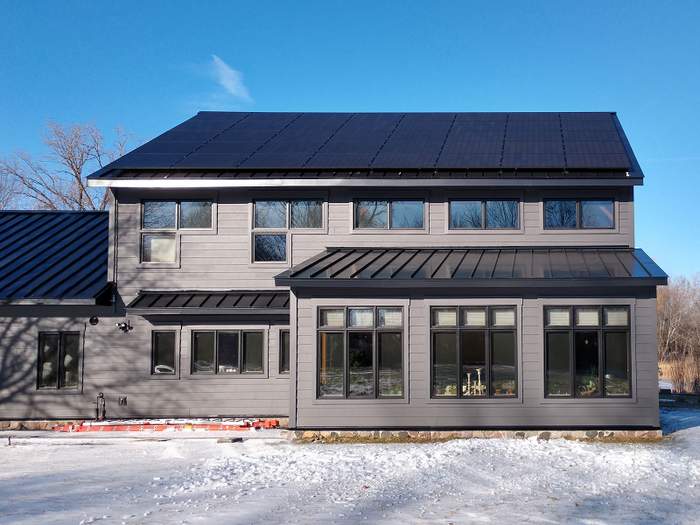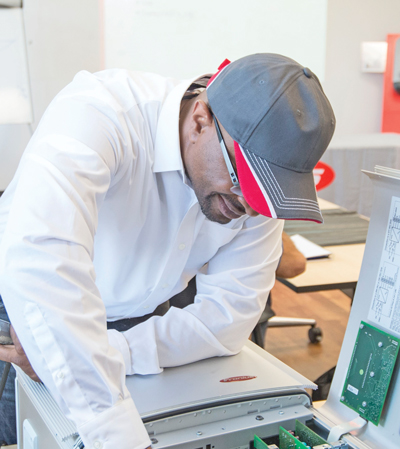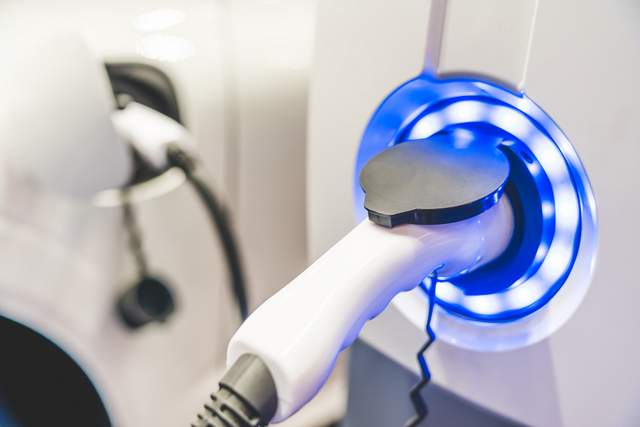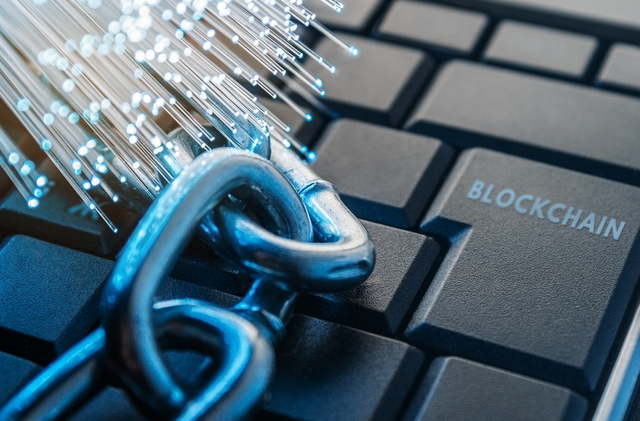
It’s gonna break my heart to see it blown to bits. That’s the refrain of the best song of 2019, “Blown to Bits” by Charly Bliss — a catchy rumination on the state of the world right now. It was playing in my headphones as I put this section together and suddenly everything connected.
What is this section? Consider it a preview.
This summer, we launched the Solar Builder Essay Contest on Solarbuildermag.com. We asked readers, subject matter experts and peers to tell us what will shape the solar industry in the 2020s, the decade SEIA has branded the Solar+ Decade. We left it fairly open-ended. Our goal was to cast a wide net and see what perspectives came back. Musings on the future of distributed generation, generated distributedly, if you will.
The topics were diverse, ranging from residential solar financing to community microgrid trends to EV infrastructure challenges, but they all connected in one fundamental way. Each entry assumes the century-long way of organizing and planning our centralized grid is no more — not as a what if, but as a fact. Utilities, with all of their steady future planning, planned for the wrong future. The old model is broken, the future is now and the possibilities are endless.
Let’s blow it to bits.
Chris Crowell is the managing editor of Solar Builder.
The Explosion of Community Microgrids in the Solar+ Decade
By Rosana Francescato | Clean Coalition
Drive down any San Francisco Bay Area freeway, and you’ll see billboards advertising an array of cannabis offerings. You can now have cannabis delivered to your home! There’s even a “Cannabis Concierge.”
Just a year or two ago, this would have been unthinkable. Just a decade or two ago, no one imagined we’d all be carrying computers in our pockets reminiscent of Star Trek transponders either. Similarly, the Solar+ Decade will bring shifts that might surprise even solar veterans who are already accustomed to constant change in the industry.
Chief among these will be a sea change from our reliance on an outdated, centralized energy system to a far more resilient one based on distributed energy resources (DER) and featuring solar + storage community microgrids. The 2020s will see networks of microgrids connected at the distribution-grid level into community microgrids that can keep critical community loads — fire stations, emergency shelters, hospitals and more — online indefinitely, even during the worst grid outage.
This won’t take a technological leap, although technological advances will help.
What the shift will require is having the right policies and market mechanisms in place. That might seem like a tall order, but efforts like these by the Clean Coalition, a California non-profit, are already afoot to usher in the solar + storage community microgrid decade:
- Streamlining the interconnection process for wholesale distributed generation (WDG) — generally commercial-scale solar installed front of the meter — which can be arduous, expensive and lengthy
- Designing market-responsive feed-in tariffs (FITs) — which have a far greater success rate than auctions for procuring WDG — with dispatchability adders to incentivize energy storage
- Standardizing the value of resilience to help everyone understand the value of solar + storage community microgrids that provide indefinite, renewables-driven backup power to critical loads
With natural disasters increasing in frequency and severity, resilience has become a pressing need. With DER costs plummeting, we’re seeing solar + storage beat even natural gas on economics alone — not to mention its far superior resilience. With more microgrids popping up, whether they’re helping rebuild devastated communities or simply saving the day at a wedding, people are seeing the benefits of these installations.
The Solar+ Decade will see a change far more significant than any cannabis concierge: a proliferation of community microgrids as we shift to a distributed energy future. Centralized energy generation will always be an important part of the mix, but the transition to solar + storage community microgrids will bring our communities unparalleled economic, environmental and resilience benefits. This change can’t come too soon.
Back that Grid Up
By Suvi Sharma | Solaria Corporation
The most significant, promising new innovation in clean energy is new residential solar + storage solutions that enable people to use the grid as a backup. In the wake of several unsettling events — such as the bankruptcy of PG&E, occurrences of extreme weather and increasingly frequent power outages — we’re now realizing that we can’t always count on the reliability of our electricity. We can no longer assume that power will just go on whenever we flip a switch. Fortunately, the advances and increased deployment of onsite distributed solar + storage systems are going to play an integral role in our energy stability and security. Thanks to the introduction of lower cost storage and high efficiency solar, self-generating clean energy systems are going to become increasingly mainstream. This development will gain significant traction in 2020 in a meaningful way and accelerate rapidly over the next decade.
Mortgage of the Future Part 1
By Jim Spano | RadiantREIT
The solar industry is booming, but suboptimal financing solutions continue to inhibit solar developers from tapping into the market’s true potential and owning more of their assets. Financing is a critical part of the solar industry’s success and costs. Ninety percent of solar projects in the United States rely on financing as opposed to outright cash purchases.
The short-term financing vehicles that are most commonly available to developers today misalign with the lifespan of solar projects. This creates an unsustainable pattern of project financing and a high cost of capital, where developers are constantly refinancing and need to sell projects to aggregators in order to have working capital to develop their next projects. I compare this structure to financing a home mortgage with a car loan.
With changes to the Investment Tax Credit (ITC) looming, now there is an opportunity to address the long-term financing challenges that have confronted the industry for many years. Tax equity will become a smaller part of the capital stack for solar projects, making more room for cost-effective, long-term debt. A way to fill that gap for small- and mid-size developers is the first-ever solar mortgage real estate investment trust (REIT.) The solar mortgage REIT will provide fixed-rate and long-term loans for new installations and refinancing for existing projects.
Modeled after the proven financial vehicle in real estate, the solar mortgage REIT pools capital to offer favorable, low-cost financing for solar developers while generating steady returns for the REIT in the form of interest payments from the solar energy produced. The standardization of small- to mid-size developers’ financing enables a REIT to offer better terms such as a lower debt service coverage ratio (DSCR), no fees, the ability to apply renewable energy credits toward the DSCR, no balloon payment default risk, no interest rate risk and more. When applied to the solar market, mortgage REITs lower the cost of capital for projects, increasing the net operating income of an asset and ensuring positive cash flows over the project’s lifetime. Ultimately, solar mortgage REITs can provide developers with the option to maintain ownership of a project.
If we can provide better and more manageable financing terms, smaller developers will be able to grow their businesses more sustainably, with the option to either sell projects to aggregators or hold the cash flow of their most lucrative projects on their own balance sheets. It is a fundamental shift in how we think about the business of project development and will help ensure solar’s growth is sustainable through changing incentives, like the ITC step down.
The Sharing Economy’s Next Frontier: Energy Sharing in Low-income Communities
Julia Morgan and Dr. Ruwen Qin | Missouri University of Science and Technology
The so-called sharing economy has given rise to new forms of business, such as AirBnB and Uber. In the next decade, consumers could use the same concept to buy, share and sell energy among themselves. In our research at the Missouri University of Science and Technology, we developed a model for the peer-to-peer sharing of renewable energy, especially for low-income communities.
Though a relatively new topic, energy sharing relies on the re-distribution of excess electricity generated by distributed generation systems (DGS). Many utility companies are investing in renewable energy systems, but end-users are also investing in renewable energy systems, which causes less demand for electricity from consumers. The increase of electricity suppliers within a community complicates the traditional utility models, and a more stable model is necessary to take into consideration electricity suppliers, price fluctuations and DGS uncertainties. Energy sharing slightly reduces the utility providers’ burden of fulfilling end-user demand.
Currently, our research has specifically looked at the effects of energy sharing on low-income communities. Low-income communities face seven day-to-day challenges: 1) affordable housing, 2) affordable and accessible health care, 3) nutrient dense food, 4) environmental inequality, 5) low job availability, 6) high crime and 7) energy burden. A study conducted by the Low Income Home Energy Assistance Program (LIHEAP) in 2005 showed that low-income households are more likely to have a high-energy burden than medium- or high-income households. Directly addressing this energy burden has the potential to positively affect almost every other challenge endured by low-income communities.
States and federal governments have attempted to address the energy burden with solar communities and solar initiative grants. In some states, there is an option to use a combination of state rebates with federal tax credits to assist in the financing of these projects. Introducing energy sharing in conjunction with any of these current efforts not only reduces the end-user electricity demand incurred by the utility but also creates a higher potential for profit because less electricity will be purchased by the utility at wholesale or retail price to be distributed to fulfill demand.
Our research shows decreasing energy burden on low-income households creates a positive effect in the five other low-income community characteristics, improving quality of life in low-income communities when energy burden is explicitly addressed.
Each end-user in a sharing community will need a home energy management system to allow them to participate in the sharing community, and each community will need a system that manages energy sharing at the community level. Once multiple communities of microgrids start connecting, they can serve as each other’s energy backup instead of the utility company. Utility companies could serve as the coordinators of the sharing communities, providing end-users with not only electricity, but also infrastructure and coordination services for energy sharing, which could be new revenue streams.
New Standards After Standardization
By Tom Tansy | SunSpec Alliance
When you examine widely adopted technologies, their success is often tied to standardization. From video formats to electrical equipment to the internet itself, the establishment of standards has significantly reduced the cost and complexity of systems and enabled low-cost adoption at global scale. With standards, the distributed energy industry — and the solar sector in particular — can build upon the competitiveness it has already attained, sustain the profitability and economies of scale needed for widespread deployment and compete on even footing with all other forms of energy generation technology.
With the publication of the IEEE 1547-2018 standard, every distributed energy resource (DER) system must support at least one standard communication interface. The choices are SunSpec Modbus, IEEE 2030.5 and IEEE 1815. What this means is that starting in 2020, every new PV and battery system, including electric vehicle charging infrastructure, will be able to communicate. Doing so will allow DERs to serve multiple roles in the energy industry, including that of providing support services to the power grid itself. One impact on the industry is that every installer must become comfortable with providing IT/OT (information technology/operational technology) inclusive of provisioning systems for cybersecurity compliance. To address this challenge, contractors must be willing to educate themselves beyond their deep knowledge of hardware and step into the realm of software to learn more about the technology.
Mortgage the Future Part 2
By Mark W. Wilkerson | Solar veteran and advocate
I think at least one of the biggest changes coming in the solar industry will be #solarinthemortgage, and this comes from a 35+ year, non-California-centric PV industry perspective. Yes, I was selling Arco Solar ASI 16-2000s in 1983 (16 volts, 2.0 amps, essentially pre-inverter) in Baltimore!
So why is “in the mortgage” a big part of this discussion? Perhaps you are mortified at paying for a solar system over 30 years. Not so fast! The longest term for residential solar financing is 20 years, with only a few high interest rate exceptions. Adding 10 years is a big factor in making solar a no-brainer.
A recent real life example is my new hometown of Babcock Ranch, Fla., one of the first solar-powered cities, which resulted in this: An average solar system might add $60 to $90 a month in the mortgage and save $100 to $150 a month on the electric bill. This is positive cash flow from day one.
For the homebuilder, does a swimming pool result in positive cash flow? How about a granite countertop (although I much prefer quartz). What other new home option can provide positive cash flow to the homeowner at all, let alone from day one?
Since 2016, average new single-family home starts in the United States was 866,000. So, let’s take a conservative estimate that 50 percent of all new homes are solar capable and can incorporate solar onto the roof. That would be 433,000 homes per year capable of having solar included in the mortgage.
If the average residential solar system is 6 kW, we have an annual potential addition of 2.6 GW of solar annually (433,000 x 6,000 watts).
Sure, those 30 million solar modules being installed by NextEra and Florida Power and Light in Florida are a bigger number. However, unless they open this LCOE resource up to the population in an authentic community-solar-type way (i.e. passing on that lowest cost) then all 75-MW solar farms do is lower the cost of generation without impacting the customer as much as possible.
Advanced Grid Technology will Help Solar Energy Power the World
By Patrick Lee | PXiSE Energy Solutions
The biggest change in the solar industry in the next decade will be the widespread adoption by utilities of next-generation electrical grid technology that will be able to harness the power of this renewable energy resource to support a more resilient, efficient and cleaner grid. Powerful software using real-time communications, AI and machine learning can tap into digital grid monitoring data to orchestrate solar and other energy resources on the grid more efficiently.
The data measurements, currently underutilized by most utilities, are the vital signs of a grid and will help the power industry make a pivotal transition from analog to digital. These systems can be deployed on common computers that replace old, proprietary hardware controllers to operate the grid and allow large-scale, faster deployment that will lead to greater affordability for utilities and their customers worldwide.
Not only does our modern grid need a controller technology that can hybridize a diverse mix of energy resources, it also needs to ensure electric service safety, reliability and quality. The intermittent nature of solar energy can cause voltage instability problems, in addition to fluctuations in power supply. The traditional electrical components used to mitigate voltage limits often conflict with the operations of the distributed energy resources.
As renewable energy generation and electrified transportation continue to grow, innovative software-based solutions will be used to upgrade our grid and realize the potential for a clean, reliable energy future.
Loads (of questions) ON Wheels
By Josh Weiner | Sepi Solar
The challenge coming in the next decade that no one is talking about is adapting solar infrastructure, traditionally perceived as part of the “electric grid,” for the “transportation grid.” We’ve made an assumption that solar is one piece of infrastructure when really it is multiple pieces of infrastructure. Part of the challenge is solving a misconception about electric vehicles.
Historically, we have thought about EVs as a type of electrical load. However, the fact that EVs are transportable (loads on wheels) means that EVs might be more like carriers of loads, or “wires.” This means highways and streets become the “conduits” and EVs the “conductors.” The batteries within EVs become the “collection of electrons.”
Terrestrial EVs may struggle to provide grid benefits in dense, urban environments, since electric and transportation grids there are already reaching peak levels of congestion. A new wireless transportation + electric grid is needed, which is what EVTOLs (electric vertical takeoff and landing aircraft) can deliver by doing all of this through the air. There’s an underlying assumption in our industry that the only way to transport electrons from one place to another is via conductors on the electric grid. With EVTOL technology, batteries in the air can transport electrons along a new, efficient, three-dimensional transportation grid.
The potential of this wireless transportation grid includes faster transportation times that are cheaper than today’s conventional transportation methods, integration and consolidation of electric and transportation grid infrastructures to lower the costs of each, greater resiliency against catastrophic environmental events, a smaller environmental and carbon footprint, and a more sustainable future for the transportation and electric grids.
Interconnection Influx Issues
By Jesse Grossman | Soltage
The challenge coming next decade no one is talking about is interconnection and transmission. The Solar Energy Industry Association (SEIA) and Wood Mackenzie Power & Renewables project that over the next five years, total installed U.S. PV capacity will more than double, with annual installations reaching 16.4 GWdc in 2021. SEIA also predicts that by 2030, solar energy will account for 20 percent of all electricity generation in the U.S. This presents a challenge for regional electric grids tasked with managing the increasing number of solar projects attempting to connect to them.
Many utilities will simply not be prepared to handle the volume of interconnection applications resulting in slow interconnection queues that could stymie this projected boom of solar. Additionally, interconnection along distribution networks can quickly get overwhelmed in markets that are trying to add solar at a larger scale because the available distribution lines and substations will become more saturated. In other words, communities can only benefit from this increase in solar energy if there are also adequate transmission and distribution infrastructure to deliver it to offtakers. Regulators, utility companies and ISOs will need to work in collaboration with the development community to determine how solar can be sustainably added at scale to these networks and look for opportunities to improve grid control and communication technologies.
Solar Plus-Plus
By John Powers | Extensible Energy
To prepare for the 2020s, successful commercial solar contractors need to evolve from being a simple solar panel installation service to becoming a more holistic solar + storage + load flexibility service, or what we might call “solar plus-plus.” The plusses mean adapting each building to take full advantage when the sun shines on each PV system. It also requires nimbly navigating increasingly complicated and dynamic utility rate structures to maximize the value of each PV system.
Of course, contractors will need skills to install solar, batteries and EV chargers, but they’ll also have to learn how to work with new types of software solutions. As utility rates and regulations change over the next decade, modern installers will use load flexibility software as a key part of their solution. These new digital tools will optimize the energy usage patterns of solar-equipped buildings for demand charges, dynamic utility rates, grid management, O&M and much more.
The reason for this solar plus-plus contractor evolution is very simple: The U.S. is quickly transitioning from an outdated, centralized fossil-fuel grid to a decentralized clean energy grid with millions of distributed energy resources. As a result, commercial buildings will be required to be smart, load flexible and grid-interactive. Utilities will reward customers and integrators for participating and responding to grid needs. Solar developers have an opportunity to lead this transition.
While machine learning and artificial intelligence software will monitor and manage energy resources, it will be modern solar plus-plus contractors who will be expected to recommend the hardware and software solutions that are best for each building. Not all grid-tied buildings will have energy storage for backup power, but all will be using a suite of integrated software that will monitor, manage and optimize the PV for the building’s occupants, as well as for the grid.
In short, commercial solar plus-plus contractors who embrace these opportunities today will become the hub for holistically deploying and connecting all energy-related services in commercial buildings in the 2020s and beyond.
New Building Block
By Junichi Oba | BF Energy
I think one of the biggest changes in the solar industry in the next decade will be utilization of blockchain technologies, which will bring about innovations. First, peer-to-peer transactions of solar energy will be popular. Many prosumers will provide their communities with their unused solar energy. In this field, companies like WePower or Power Ledger are likely to help us go this way. Furthermore, given the abundance of solar everywhere, everybody can get solar energy much cheaper than it is today.
Secondly, tokenization of solar assets will be also popular, with many investors sharing utility-scale or community solar power plants, investing their fiat- or cryptocurrencies. Over time, you may be able to pay the electricity bill with Bitcoin, Ethereum, or whatever the cryptocurrency is. A startup called Allinfra seems a good candidate to make it happen. As to damages to the solar power plant caused by natural disasters, decentralized or parametric insurance products, based on blockchain technologies, can protect the assets and properties with lower premiums. I hope Etherisc can come up with a suitable insurance product for solar power plants. Solar energy is a means of distributed generation, so I feel blockchain or another distributed ledger technology and solar are really a good match.
— Solar Builder magazine












Leave a Reply
You must be logged in to post a comment.